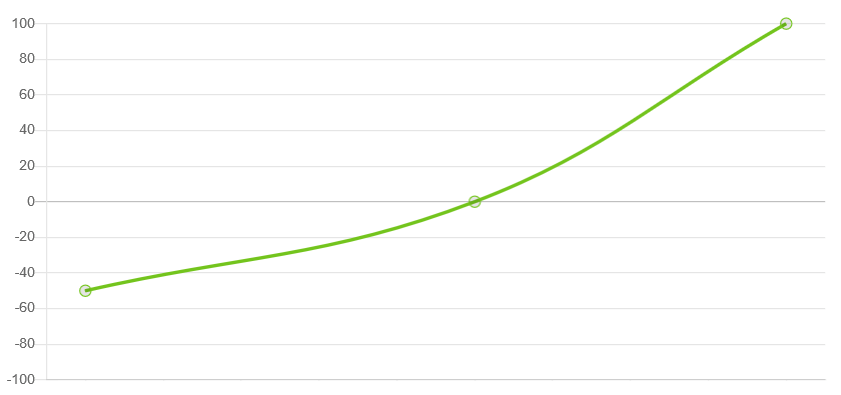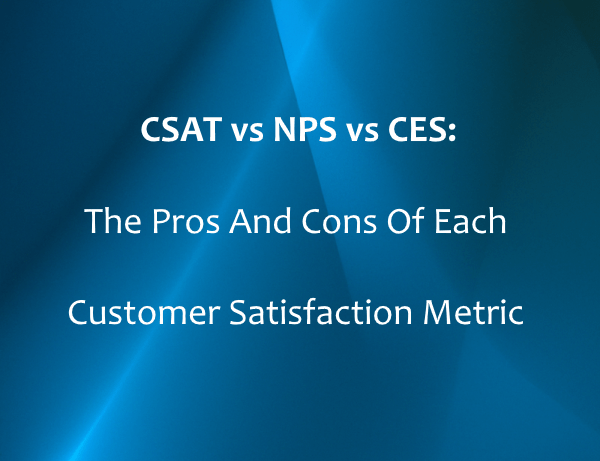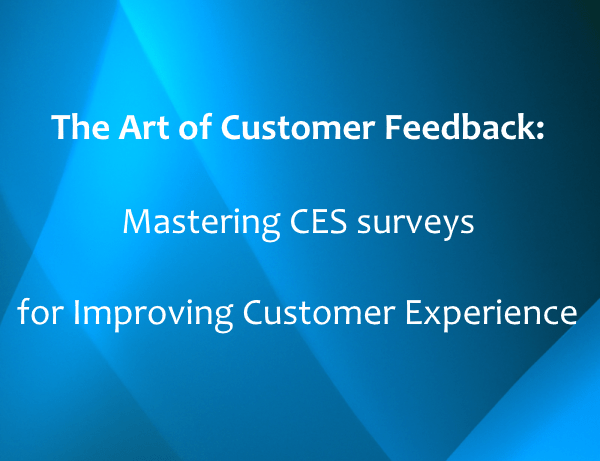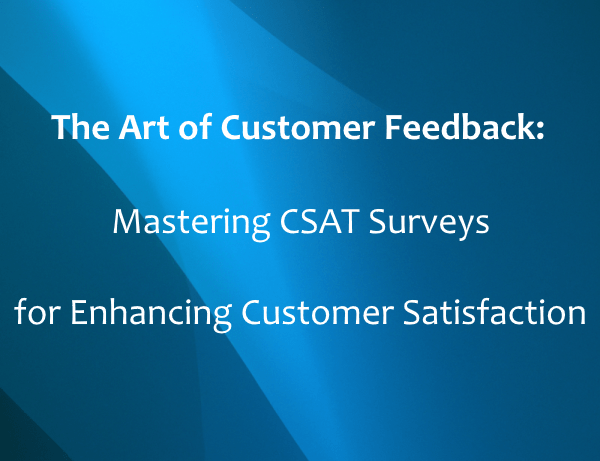The Art of Customer Feedback: Mastering NPS Surveys for Business Growth
Building strong customer relationships and cultivating loyalty are vital for the success of any business. In this pursuit, Net Promoter Score (NPS) surveys have emerged as a valuable tool to measure customer sentiment, identify brand advocates, and drive business growth. By effectively leveraging NPS data, companies can make informed decisions, prioritize improvements, and create exceptional experiences that foster customer advocacy.
This comprehensive guide aims to provide a step-by-step roadmap for harnessing the power of NPS surveys. We will explore the fundamental concepts of NPS, delve into the methodology for calculating scores, and uncover the significance of different customer segments. Additionally, we will navigate the process of implementing NPS surveys effectively, covering aspects such as survey design, timing strategies, and distribution methods.
The Power of Net Promoter Score

Defining Net Promoter Score
Net Promoter Score is a metric that measures customer loyalty and gauges the likelihood of customers recommending a company's product or service to others. Introduced by Fred Reichheld in 2003, NPS has become a widely adopted tool for understanding customer sentiment.
How NPS Works
NPS is based on a simple question:
“On a scale of 0 to 10, how likely are you to recommend us to a friend or colleague?”
Based on their responses, customers are segmented into three groups: detractors (score 0-6), passives (score 7-8), and promoters (score 9-10).
The NPS is calculated by subtracting the percentage of detractors from the percentage of promoters.
NPS = % Promoters - % Detractors
For example, if 29% of customers are promoters and 19% of customers are detractors, the NPS would be calculated as:
NPS = 29 - 19 = 10

The NPS questions
The question to measure the Net Promoter Score is usually something like "How likely are you to recommend our product/service to a friend or colleague?"
But nothing is preventing you from phrasing the question differently, like for example:
- On a scale of 0-10, how satisfied are you with our customer service/support?
- How well does our product/service meet your needs and expectations?
- On a scale of 0 to 10, how likely are you to renew or continue using our product/service?
- How likely are you to purchase from us again?
- How likely are you to speak positively about our company to others?
Usually the
closed-ended NPS measurement question is followed by
an
open-ended follow-up question, like:
- What is the most important reason for your score?
- Can you share a specific experience that led to this score
- What could we have done to make your experience better? (for non-promoters)
Such an open-ended follow-up question can provide additional context and insights into the reasons behind customers' scores and feedback. By analyzing both the quantitative scores and the qualitative feedback provided by customers, companies can gain a more comprehensive understanding of their customers' satisfaction levels and take actionable steps to improve their customer experience.
Benefits of NPS
- Identifying customer satisfaction: NPS surveys provide insights into how satisfied customers are with your product or service.
- Predicting customer behavior: NPS has proven to be a reliable indicator of customer behavior, including repurchase intentions and referral likelihood.
- Enhancing customer experience: By tracking NPS, businesses can identify areas for improvement and take targeted actions to enhance the customer experience.
- Benchmarking against competitors: NPS allows for benchmarking against industry competitors, providing insights into where your brand stands.
Implementing an Effective NPS Survey
Designing the Survey
Designing an effective NPS survey is crucial to gather meaningful feedback from your customers. Here are some key considerations:
- Keep it simple: NPS surveys should be concise and straightforward, allowing customers to complete them quickly. Focus on the core NPS question and avoid excessive complexity.
- The core question: Place the main NPS question prominently in your survey. Make clear that 0 is the worst value that can be selected and 10 is the best.
- Follow-up questions: While the NPS question provides a numeric score, including follow-up questions can help uncover insights. These questions can be open-ended, asking customers to elaborate on their scores or provide suggestions for improvement.
Determining Survey Timing
Timing is crucial when implementing NPS surveys to capture accurate and relevant feedback. Consider the following timing strategies:
- Onboarding: Implement NPS surveys during the onboarding process to understand the initial customer experience. This early feedback can help identify potential issues and set a benchmark for future interactions.
- Post-purchase: Send NPS surveys after customers have had a chance to experience your product or service. This allows you to capture feedback when it's most relevant and reflective of their experience.
- Touchpoints: Identify key touchpoints in the customer journey, such as after a customer support interaction or product upgrade, and gather NPS feedback at these critical stages. This helps to pinpoint specific areas of improvement.
Choosing the Right NPS Distribution Method
Selecting the appropriate distribution method for your NPS surveys can significantly impact response rates and data quality. Consider the following options:
Analyzing and Acting on NPS Results
Collecting NPS feedback is just the beginning. To make the most of your NPS survey data, follow these steps:
-
Track and monitor trends: Regularly analyze NPS data to identify patterns and trends over time. Monitor changes in your NPS scores and segment data by customer demographics or other relevant factors to gain deeper insights.

- Address detractors: Reach out to detractors promptly after receiving their feedback. Understand their concerns, offer support, and take appropriate actions to resolve their issues. This proactive approach can help turn detractors into satisfied customers.
- Engage with promoters: Leverage your promoters by turning them into advocates for your brand. Implement referral programs, ask for testimonials, or offer incentives to encourage them to spread positive word-of-mouth.
- Continual improvement: Use NPS feedback as a tool for continuous improvement. Identify common themes or pain points in customer feedback and take targeted actions to enhance your products, services, and overall customer experience.
By implementing these strategies, you can ensure that your NPS surveys generate valuable insights, guide decision-making, and drive positive changes within your organization.
The Best NPS Survey Tool - Informizely
Introducing Informizely
When it comes to NPS survey tools,
Informizely stands out as one of the top choices for businesses of all sizes.
With its user-friendly interface and robust features, Informizely empowers companies to gather valuable feedback and make data-driven decisions to enhance customer loyalty and satisfaction.
Key Features of Informizely
- Seamless survey creation: Informizely offers a best-in-class AI-assisted survey builder that allows you to create customized NPS surveys quickly. With a wide range of question types and customization options, you can tailor your surveys to fit your brand and capture the necessary data.
- Real-time feedback collection: Informizely enables you to collect feedback from your customers in real-time. Whether you choose to embed surveys on your website, send them via email, or use targeted website pop-ups, you can engage customers at the right moment to gather their NPS scores and additional insights.
- Advanced targeting and segmentation: With Informizely, you can target specific customer segments and collect NPS data from different groups. By using advanced segmentation capabilities, you can analyze the feedback from different customer segments separately and gain a deeper understanding of their unique needs and preferences.
- Actionable analytics and reporting: Informizely provides comprehensive analytics and reporting features to help you make sense of your NPS data. The platform offers real-time dashboards, trend analysis, and visual reports, allowing you to track changes in your NPS scores over time and identify areas for improvement.
- Integration possibilities: Informizely integrates seamlessly with popular CRM systems, marketing automation tools, and customer support platforms. This integration ensures that your NPS data can be easily shared and synchronized across your organization, enabling you to take prompt action based on customer feedback.
The Benefits of Using Informizely
- User-friendly interface: Informizely's intuitive interface makes it easy for businesses to create, deploy, and manage NPS surveys without the need for extensive technical expertise.
- Enhanced customer engagement: With Informizely's flexible survey deployment options, you can reach your customers at the right touchpoints, maximizing response rates and capturing valuable feedback.
- Data-driven decision-making: Informizely's analytics and reporting capabilities empower you to gain actionable insights from your NPS data. By understanding customer sentiment and trends, you can make informed decisions to improve your products, services, and overall customer experience.
- Customization and personalization: Informizely allows you to customize your NPS surveys to align with your brand identity, creating a consistent and personalized experience for your customers.
- Continuous improvement: By regularly collecting NPS feedback through Informizely, you can monitor changes in customer satisfaction and identify opportunities for continuous improvement, ensuring that your business stays ahead of the competition.
Conclusion
Net Promoter Score surveys provide businesses with valuable insights into customer loyalty and satisfaction. By understanding customer sentiment and identifying promoters and detractors, organizations can take targeted actions to enhance the customer experience and drive business growth.
Implementing NPS surveys requires careful planning, including survey design, timing, and choosing the right distribution method. With the help of a top NPS survey tool like Informizely, collecting and analyzing NPS data becomes more accessible and actionable. By leveraging the power of NPS, businesses can build a strong foundation for customer-centric strategies and sustainable success.





